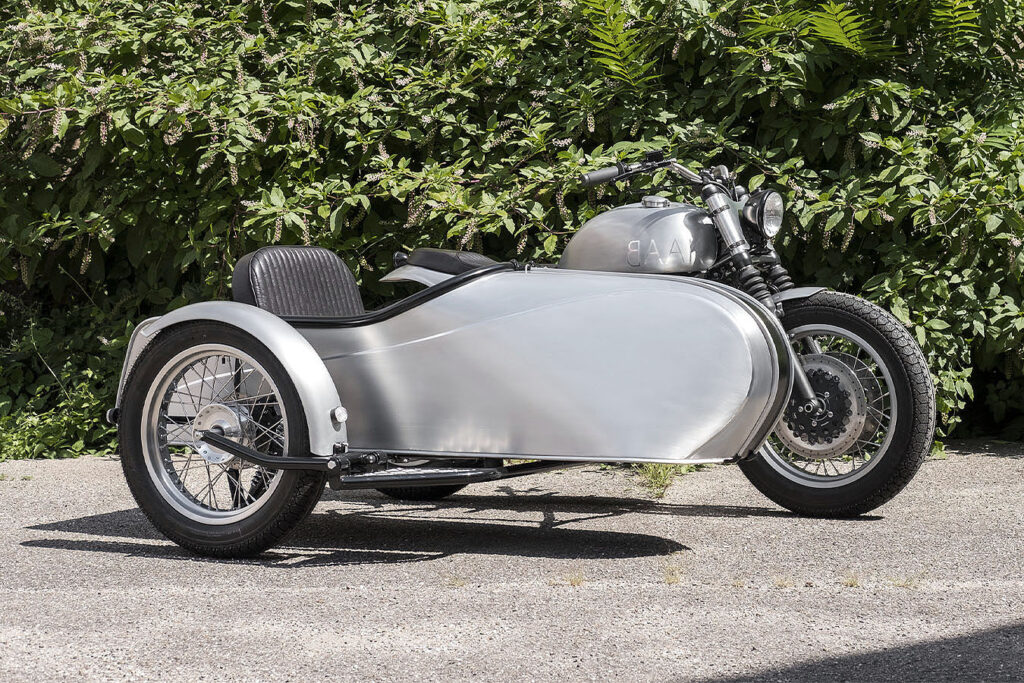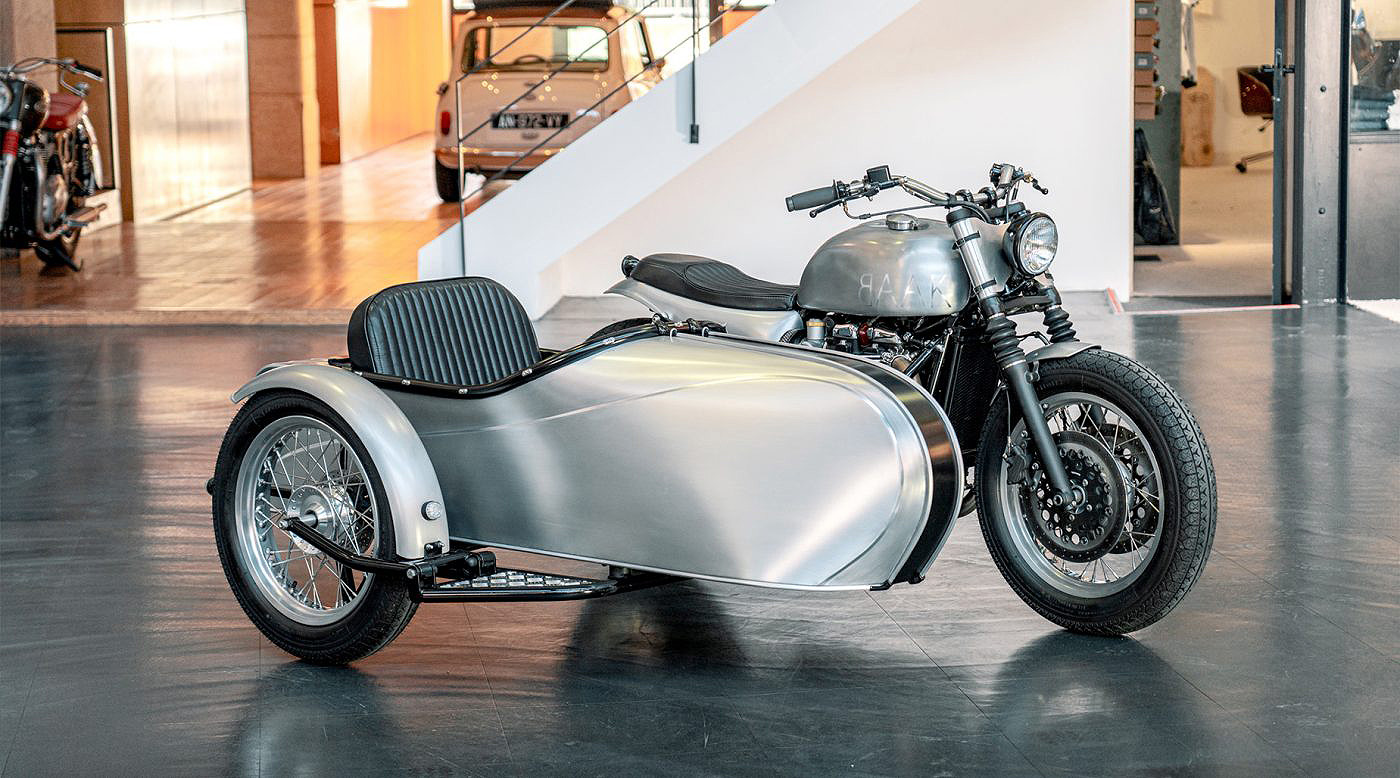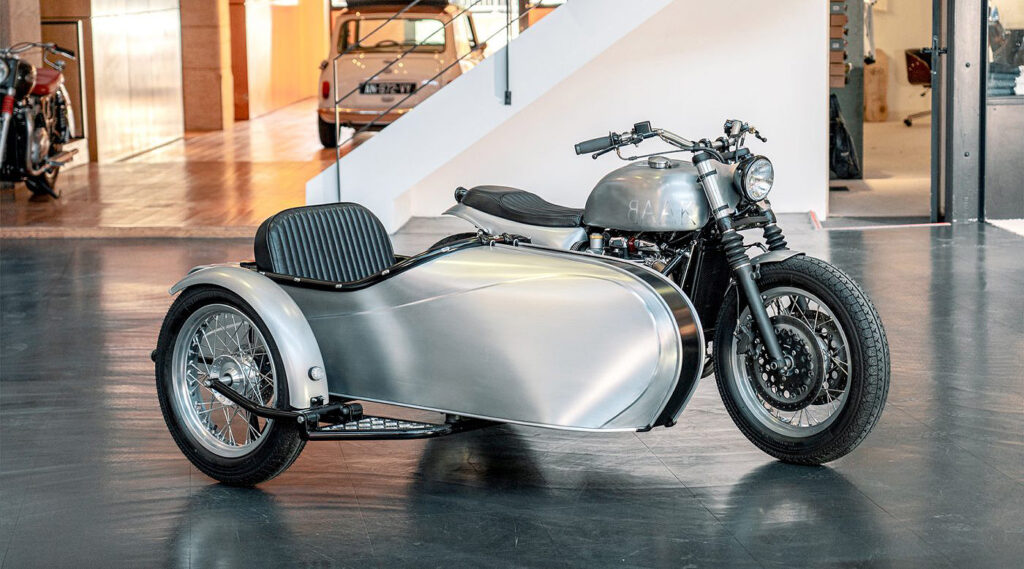
There is no doubt that there are periods in human history when innovation seems to be so thoroughly embraced by societies, that new technologies spring to life with extreme regularity. One of those periods was the final decade of the 19th century and the first decade of the 20th. Both cars and motorcycles would go into full production in this period and in 1903, just three weeks after a magazine published a cartoon of a sidecar, a British company had patented the design. Things were happening quickly, but the sidecar was in fact a French invention, so it is fitting that this glorious vintage-inspired chariot comes from Lyon-based outfit BAAK Workshop. The main steed is a 2018 Triumph T120, and it sports a third-wheel carriage, both with brilliant hand-beaten metal bodies.
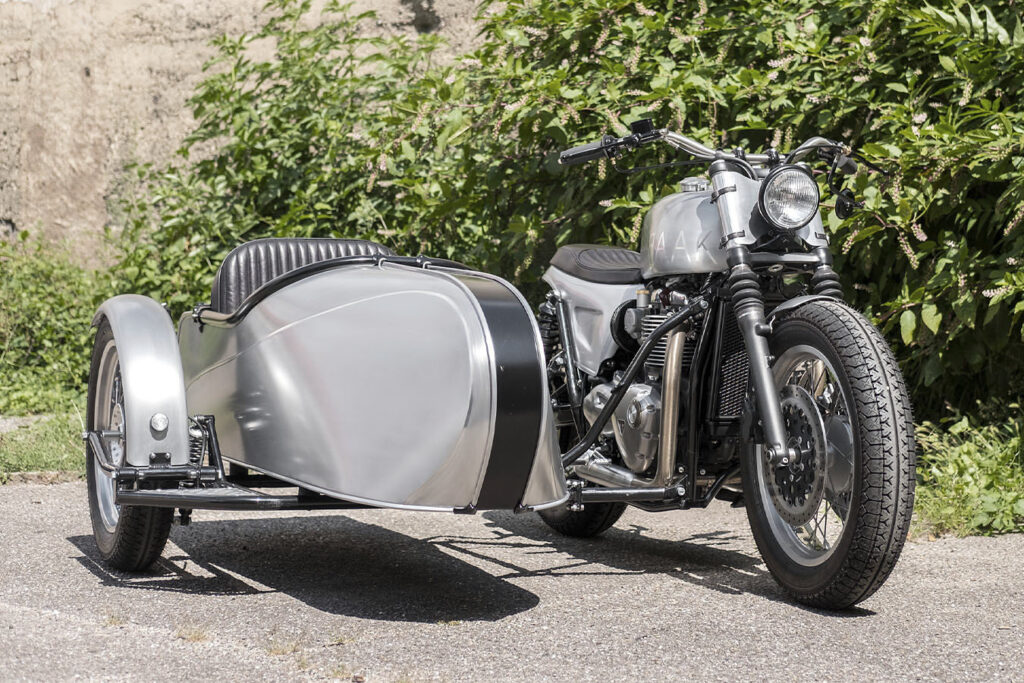
When you think about all that the BAAK brand represents, a sidecar as part of the fleet simply makes perfect sense. Not only do Rémi Reguin and his team build stunning classic customs, but they also offer a host of parts and vintage-inspired accessories, and the adventure division takes riders on tours of some of Europe’s finest roads. Last year’s major tour was to the gastronomical sensation that is Provence, and I’d have no problem sitting in a sidecar for that trip; more chance for food and wine. But as Remi tells us, “Alliance II is the second sidecar to come out of BAAK’s workshop, this time the result is a more raw vision contrasting with a more sophisticated first iteration.”

That first three-legged pup was based around an earlier Triumph Bonneville 865 and was very much the height of elegance, perfect for the likes of a Jay Gatsby. This time around the extra extravagance of the ’20s makes way for a more ’30s-inspired look, where times were tough but the workmanship simply never faltered. The entire concept was designed in-house at the Lyon base, with all departments having input into how this second sidecar should look and what it should represent. Then with a T120 Bonneville acquired, it could be stripped back and the crew could begin the hands on work to start to bring things to life.
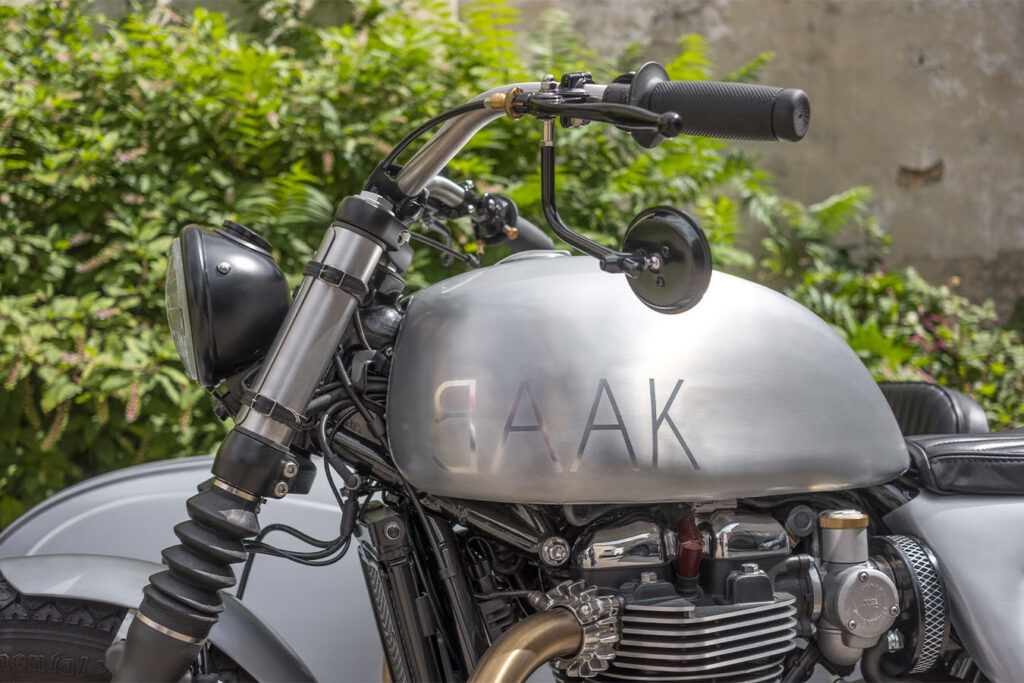
First to step up was the metal shaper, and he had the task of transporting the look of the Bonnie back nearly 100 years. To achieve this, a raw alloy appearance was chosen for the task and it’s all been hand beaten from aluminium. The fuel tank is cleverly accomplished by making a skin to go over the original tank, achieving the right look, without having to go about changing the fuel pump and other accessories into an all-new tank. From the top you can see just how talented this craftsman is, with a relief shaped into the metal to clear the Monza-style filler cap. A neat number board sits in front of the tank and behind the headlight and adds to the alloy appeal, with leather straps holding it in place.
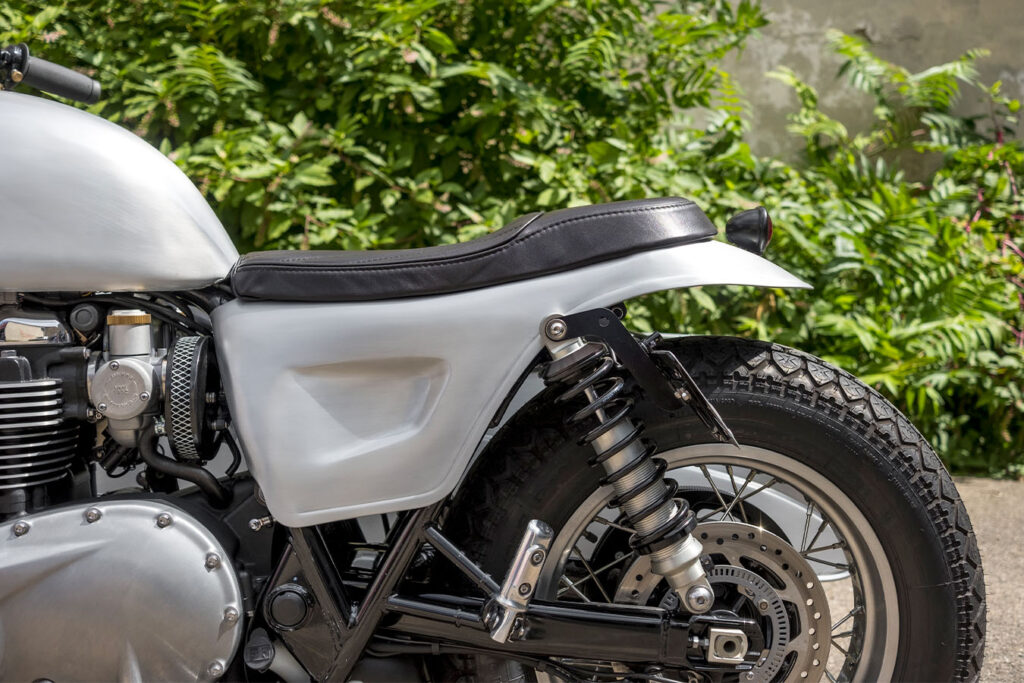
But the pièce de résistance is without a doubt the rear cowling and side covers, which are incredibly crafted from a single piece. This is truly befitting the work from the masters of old, 3D-shaped side covers, a beautiful rear fender, reliefs for the twin shocks and so much more all included into what is a visually stunning creation. Even the front fender was beaten and rolled by hand and then for the sidecar itself, “it was designed and produced by Precision Side-Cars a legendary French manufacturer, this ‘Gran’Large’ model is particularly convenient with the 70L trunk space!” Again the metalwork is sublime and with both outfits working together, the look is very cohesive and flowing.
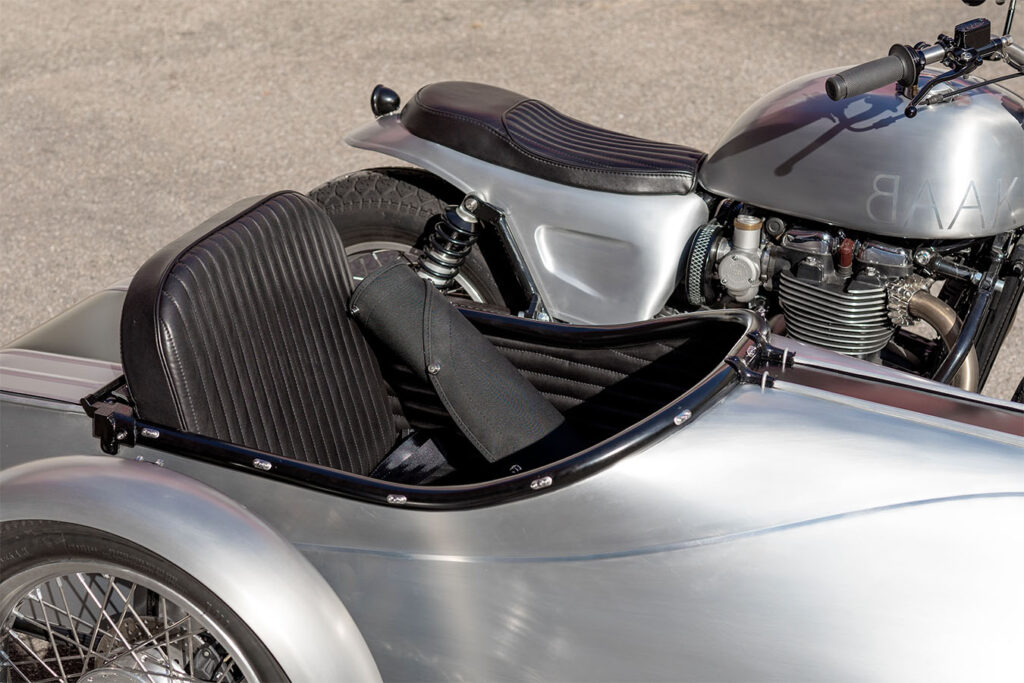
To bring both to life, the painter was the next man to get his hands dirty and all of the raw metal pieces were hit in a satin clear, to protect the light alloy and to also achieve a uniform appearance across all of the tins. Next, he had the task of incorporating the BAAK logo into the tank design and brilliantly polished it in rather than applying paint. The sidecar itself needed something to break up all of that alloy, and a satin black stripe was chosen to run the full length, with the company logo this time ghosted into the paint. Finally, a chassis black was used on all of the functional pieces of the car and the frame of the bike.
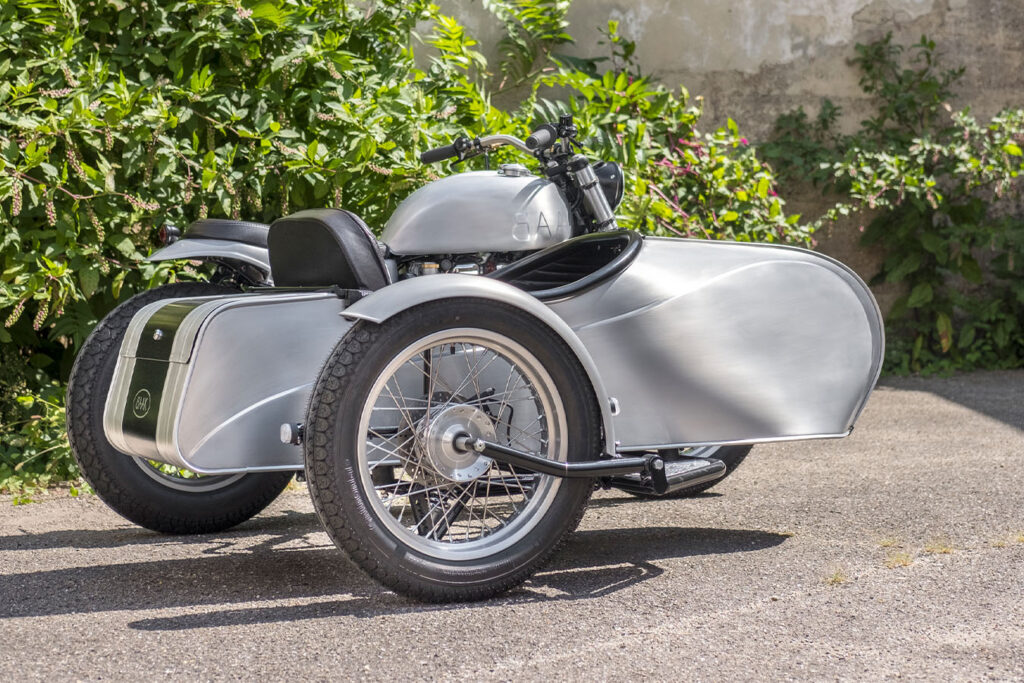
The handling and braking of the vehicle haven’t been ignored either, and to ensure a smooth ride for the passenger, the car is fitted with its own suspension. The Triumph has been improved too, with a reworked front and gaiters for the look, before a set of adjustable shocks were spec’d for the rear end. To handle the extra weight, the sidecar chassis has a set of brake lines running across to the third wheel and a drilled disc brake and quality caliper help to call a halt to the action. All three wheels are lightweight alloy rims, with stainless spokes and beautifully polished hubs, wrapped up in some form fitting classic rubber.
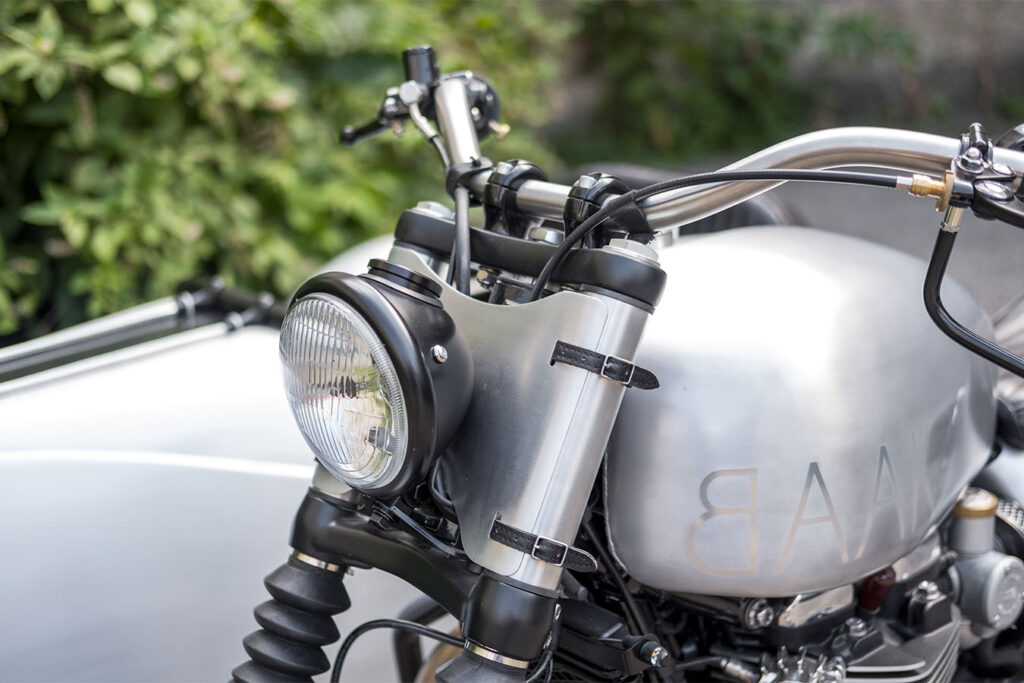
To help transform the Triumph a little more, the lighting is now vintage and the new bars only feature the most minimal of classic components, with the single instrument mounted into the Bates headlight housing. The engine is a ripper from the factory, and a simple set of oversized filters and an in-house catalogue exhaust system help to transport the modern water-cooled motor back a hundred years. Finally, to complete the project the leather artisans were put to work, “a beautiful black leather wrap for the entire passenger compartment and the classic stitching keeps the very linear theme going.” There is even an internal pocket for storage and a tonneau cover for when the passenger is at home.
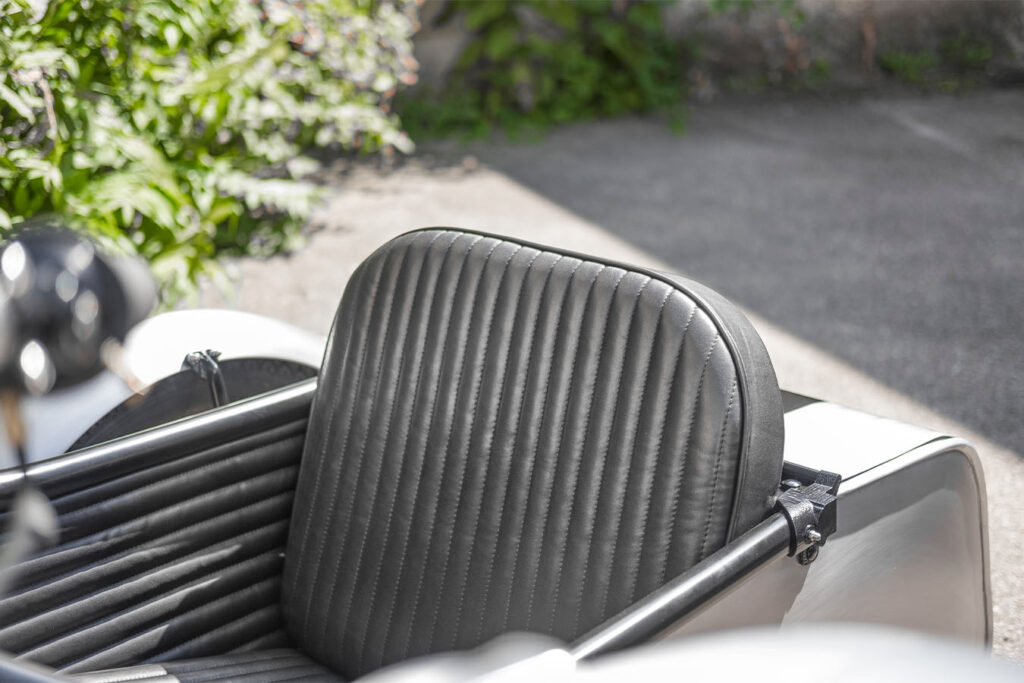
The finished product just oozes elegance and from every department the workmanship is flawless, with hundreds of hours spent to ensure absolute perfection. As with all BAAK builds, this bike is now for sale and can be shipped to you anywhere in the world. And if you’d like to be the standout at this year’s Distinguished Gentleman’s Ride – no matter where you live – then at €28,000 BAAK has already done the building for you.
